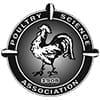Researchers take a closer look at geese stocking density - Interpretive Summary
Published: August 11, 2022
By: https://poultryscience.org/
by Sam Shafer
Higher stocking density linked to lower body weight and weight gain, but is total antioxidant capacity the culprit?
Poultry scientists have found that a goose’s performance is closely tied to their housing conditions. But while there are several studies linking high stocking density to health problems in geese, research is lacking when it comes to the actual physiological drivers behind decreased goose performance.
Now a new study in The Journal of Applied Poultry Research shows that body weight and weight gain in female White Sichuan geese may come down to the relationship between stocking density and a bird’s total antioxidant capacity, which is part of the system regulating a bird’s lipid metabolism and overall health.
The research, led by a team of Chinese poultry scientists, shows that geese have a higher body weight and gain weight more quickly when they are housed with no more than 6.15 birds/m2 from days 1-28 and 4.83 birds/m2 from days 28 to 49. This improvement corresponds with a boost in total antioxidant capacity.
The scientists hypothesize that without a robust antioxidant capacity, geese have a harder time clearing excess reactive oxygen species in their cells, which may lead to more cellular stress and decreased growth performance.
For the study, the researchers tested geese housed in six different densities: 7, 9, 11, 13, 15, and 17 birds/pen (or 4.67, 6.00, 7.33, 8.67, 10.00, and 11.33 birds/m2, respectively). The geese started at the same initial body weight and were given the same diet containing 11.75 MJ metabolizable energy/kg and 190 g crude protein/kg of diet. Water was provided by drip-nipple water supply lines and a free supply of pelleted feed was provided in feed troughs on one side of each pen.
As stocking density went up, the scientists saw a linear decrease in both body weight and weight gain. They also saw a decrease in feed intake in the higher density pens in birds during days 1 to 28, though not during days 28 to 49.
“Hence, the feed intake might be the reason for poor growth performance of poultry in the earlier period, but it was not in the grower period,” write the study authors.
At the end of the 49 day period, the researchers took blood samples from one goose per pen and found that when the stocking density was 5.00 or more birds/m2, the geese had a lower total antioxidant capacity and lower levels of an antioxidant enzyme called superoxide dismutase (SOD).
Together, the findings suggest that a lower antioxidant capacity could be the culprit behind the decreased performance in female geese kept at a higher stocking density.
What does this study mean for producers?
- Stocking density may affect a goose’s ability to gain weight by changing its total antioxidant capacity.
- To maintain a healthy antioxidant capacity in birds, the researchers suggest no more than 6.15 birds/m2 from days 1-28 and 4.83 birds/m2 from days 28 to 49.
- Because of additional changes in feed intake, it may be wise to adopt a multiphase strategy for housing geese during the early and grower phases.
The full paper, titled “Estimates of stocking density of female geese in different growth stages” can be found in The Journal of Applied Poultry Research and online here.
DOI: 10.1016/j.japr.2021.100215
Source
https://poultryscience.org/Related topics:
Authors:

Recommend
Comment
Share

Would you like to discuss another topic? Create a new post to engage with experts in the community.



